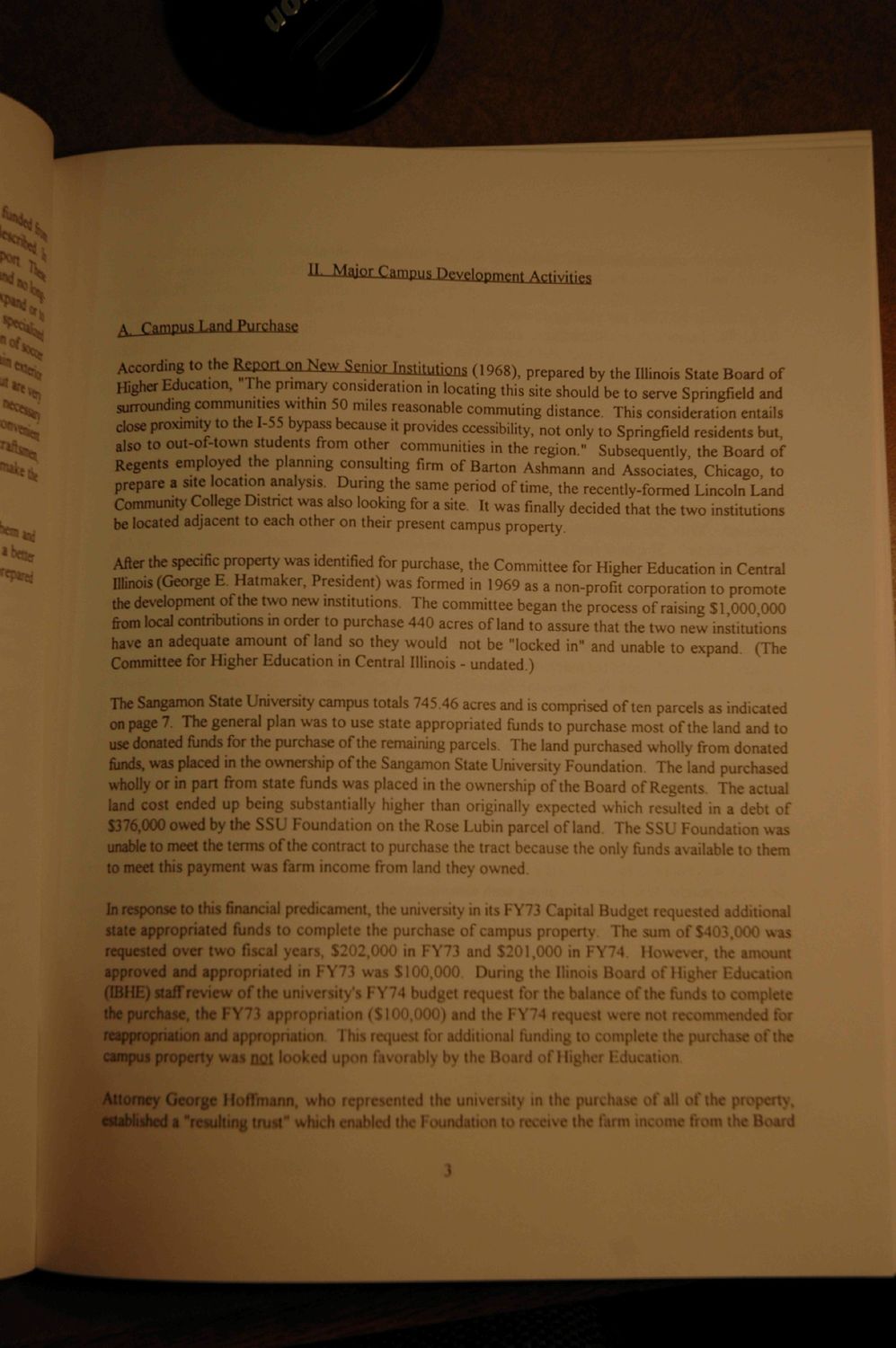| |
| |
Caption: UIS History 1969-1995 (Sangamon State Univ)
This is a reduced-resolution page image for fast online browsing.

EXTRACTED TEXT FROM PAGE:
II. Maior Cam P .^p rYft | n p ment H |ampus Land Purchase Activities According to the Report on New Senior ImtitiilioM, (1968), prepared by the Illinois State Board of Higher Education, The primary consideration in locating this site should be to serve Springfield and surrounding commumtiw within 50 miles reasonable commuting distance. This consideration entails close proximity to the 1-55 bypass because it provides ccessibility, not only to Springfield residents but, also to out-of-town students from other communities in the region." Subsequently, the Board of Regents employed the planning consulting firm of Barton Ashmann and Associates, Chicago to prepare a site location analysis. During the same period of time, the recently-formed Lincoln Land Community College District was also looking for a site. It wasfinallydecided that the two institutions be located adjacent to each other on their present campus property. After the specific property was identified for purchase, the Committee for Higher Education in Central Illinois (George E. Hatmaker, President) was formed in 1969 as a non-profit corporation to promote the development of the two new institutions. The committee began the process of raising $1 000 000 from local contributions in order to purchase 440 acres of land to assure that the two new institutions have an adequate amount of land so they would not be "locked in" and unable to expand. (The Committee for Higher Education in Central Illinois - undated.) Tne Sangamon State University campus totals 745.46 acres and is comprised often parcels as indicated on page 7. The general plan was to use state appropriated funds to purchase most of the land and to use donated funds for the purchase of the remaining parcels. The land purchased whollyfromdonated funds, was placed in the ownership of the Sangamon State University Foundation. The land purchased wholly or in part from state funds was placed in the ownership of the Board of Regents. The actual land cost ended up being substantially higher than originally expected which resulted in a debt of 1376,000 owed by the SSU Foundation on the Rose Lubin parcel of land. The SSU Foundation was unable to meet the terms of the contract to purchase the tract because the only funds available to them to meet this payment was farm income from land they owned. In response to thisfinancialpredicament, the university in its FY73 Capital Budget requested additional state appropriated funds to complete the purchase of campus property. The sum of $403,000 was requested over two fiscal years, $202,000 in FY73 and $201,000 in FY74. However, the amount approved and appropriated in FY73 was $100,000. During the llinois Board of Higher Education (IBHE) staff review of the university's FY74 budget request for the balance of the funds to complete the purchase, the FY73 appropriation ($100,000) and the FY74 request were not recommended for reappropnation and appropriation. This request for additional funding to complete the purchase of the campus property was rjoj looked upon favorably by the Board of Higher Education. Attorney George Hoffmann, who represented the university in the purchase of ail of the property, established a "resulting trust" which enabled the Foundation to receive the farm income from the Board
| |